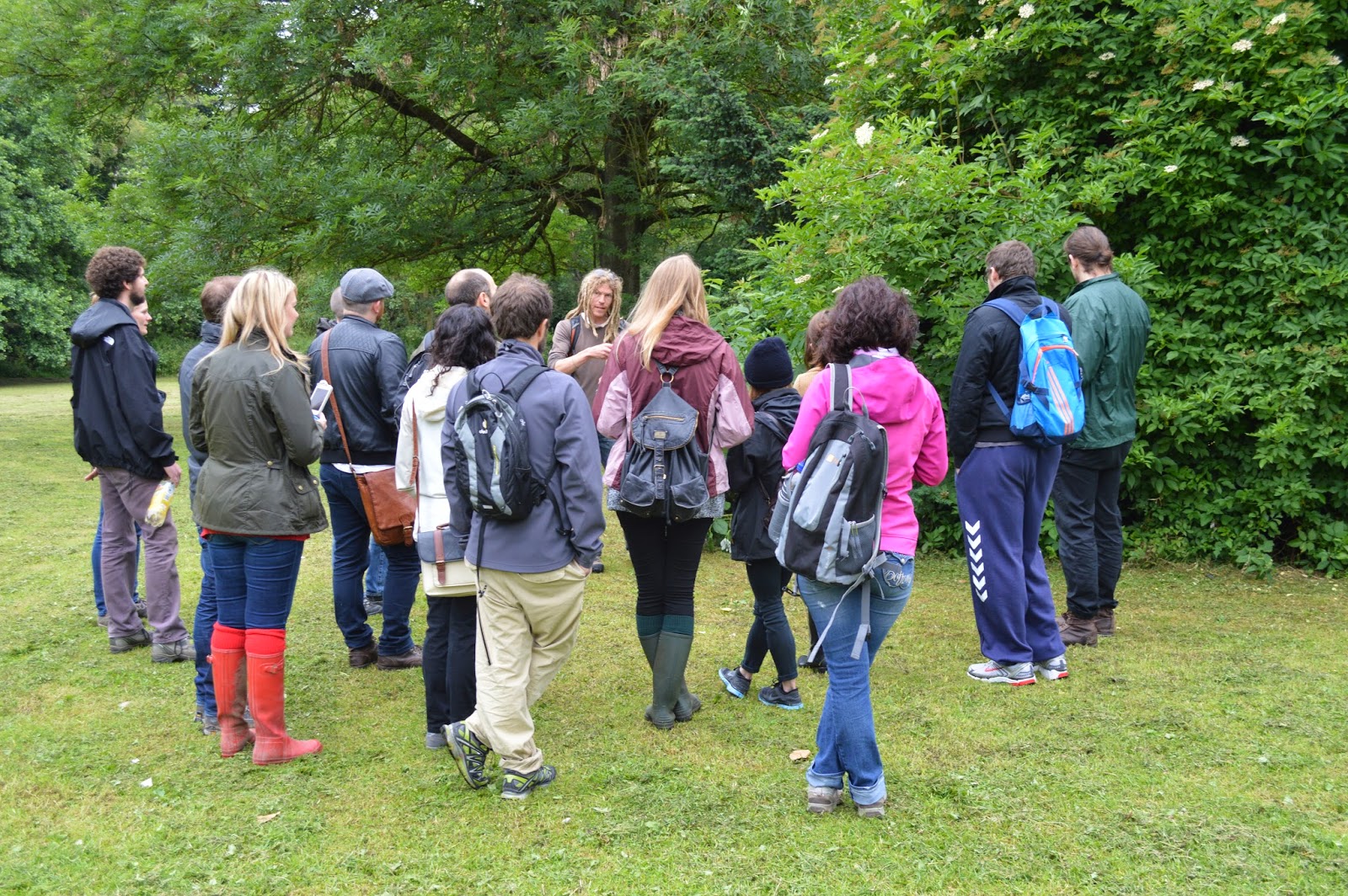Fabulous turn out on Saturday 28th June (fully booked!). Big thanks to such a wonderful group for helping make the event so enjoyable. Quite an international feel to it aswell, had folk from New Zealand, South Africa, France and Australia, great to have so many folk from different countries interested in wild foods in the UK. Plants along the route included; Elder, Raspberry, Nettle, Hogweed, Hemlock Water-Dropwort, Common/Wood Sorrel, Reedmace, Oyster Mushroom
The wonderful and amazing Elder (Sambucus nigra) has many stages of use, buds, flowers, berries and so many uses (book on a walk to find out more...). It would be so very rude not to dedicate time to discuss it. Don't forget to ask permission from the spirits before harvesting though :0)
Sampling, Elder Buds pickled in Sweet Magnolia Vinegar and Colsfoot Vinegar (left). Elder buds can be used in a variety of dishes.
It's great knowing what's edible but so important knowing what's not edible! Here, we are discussing the id features and dangers of Hemlock Water-Dropwort (Oenanthe crocata), one of the most toxic plants to be found in the UK. The results of munching too much of this, accidently or deliberately are often fatal! That aside it is a very beautiful looking plant.
Looking at the distictive and extremely beautiful cross-section pattern of Reedmace (Typha latifolia). I'd brought along a jar of Reedmace pickled in a sweetened/spiced vinegar.
The cutting of one of the cakes at end of walk, Elderflower and Orange. T'other cake was Elderflower and Lemon.
Time for Elderflower and Orange/Lemon cakes and Elderflower cordial and a bit of a social.

If you would like to join me on one my wild food/mushroom walks, or you would like to book for a group of friends, colleagues, family please email me at edible.leeds@gmail.com or call Craig on 07899752447.
 | |||||||||
Sampling, Elder Buds pickled in Sweet Magnolia Vinegar and Colsfoot Vinegar (left). Elder buds can be used in a variety of dishes.
It's great knowing what's edible but so important knowing what's not edible! Here, we are discussing the id features and dangers of Hemlock Water-Dropwort (Oenanthe crocata), one of the most toxic plants to be found in the UK. The results of munching too much of this, accidently or deliberately are often fatal! That aside it is a very beautiful looking plant.
Looking at the distictive and extremely beautiful cross-section pattern of Reedmace (Typha latifolia). I'd brought along a jar of Reedmace pickled in a sweetened/spiced vinegar.
The cutting of one of the cakes at end of walk, Elderflower and Orange. T'other cake was Elderflower and Lemon.
Time for Elderflower and Orange/Lemon cakes and Elderflower cordial and a bit of a social.

If you would like to join me on one my wild food/mushroom walks, or you would like to book for a group of friends, colleagues, family please email me at edible.leeds@gmail.com or call Craig on 07899752447.





Comments
Post a Comment